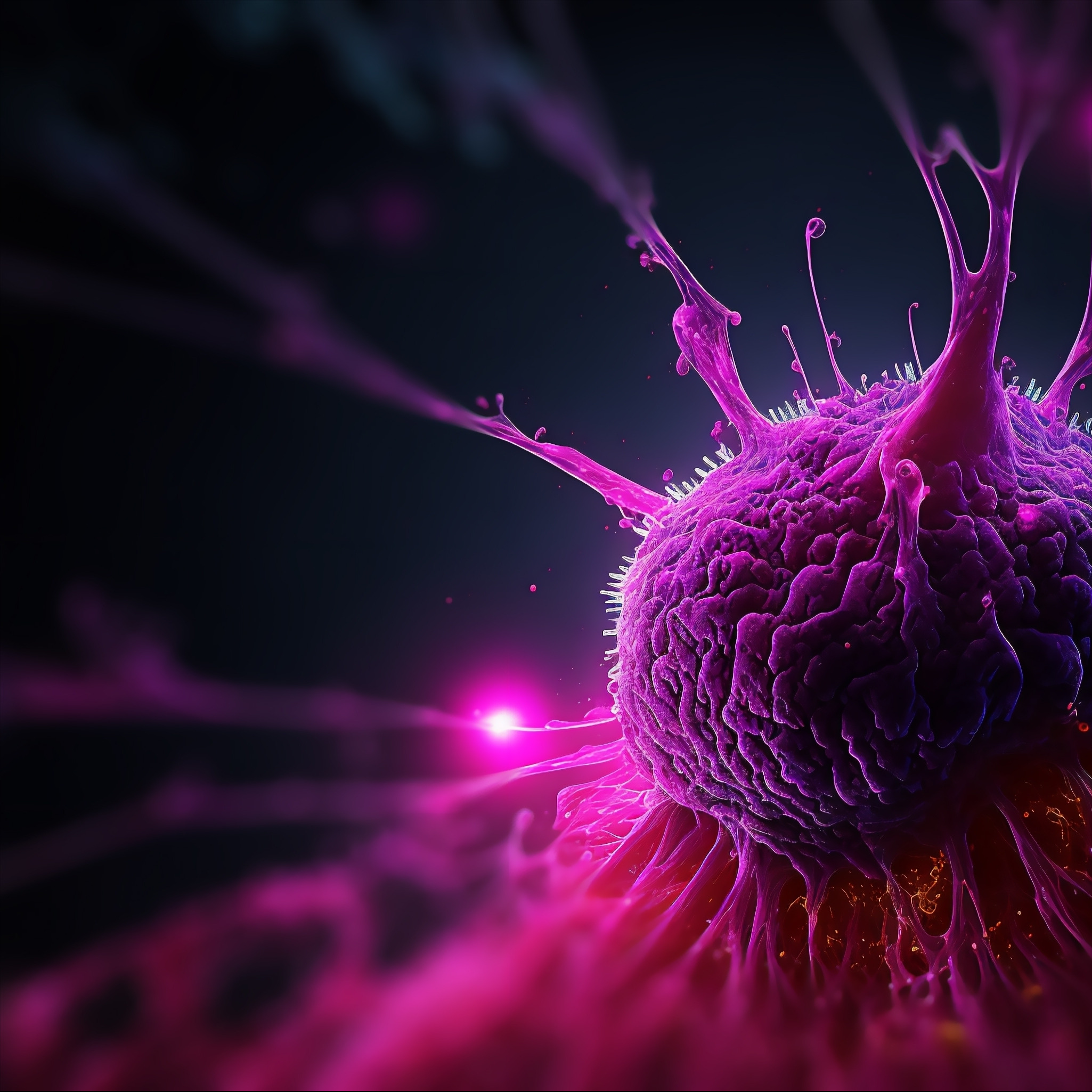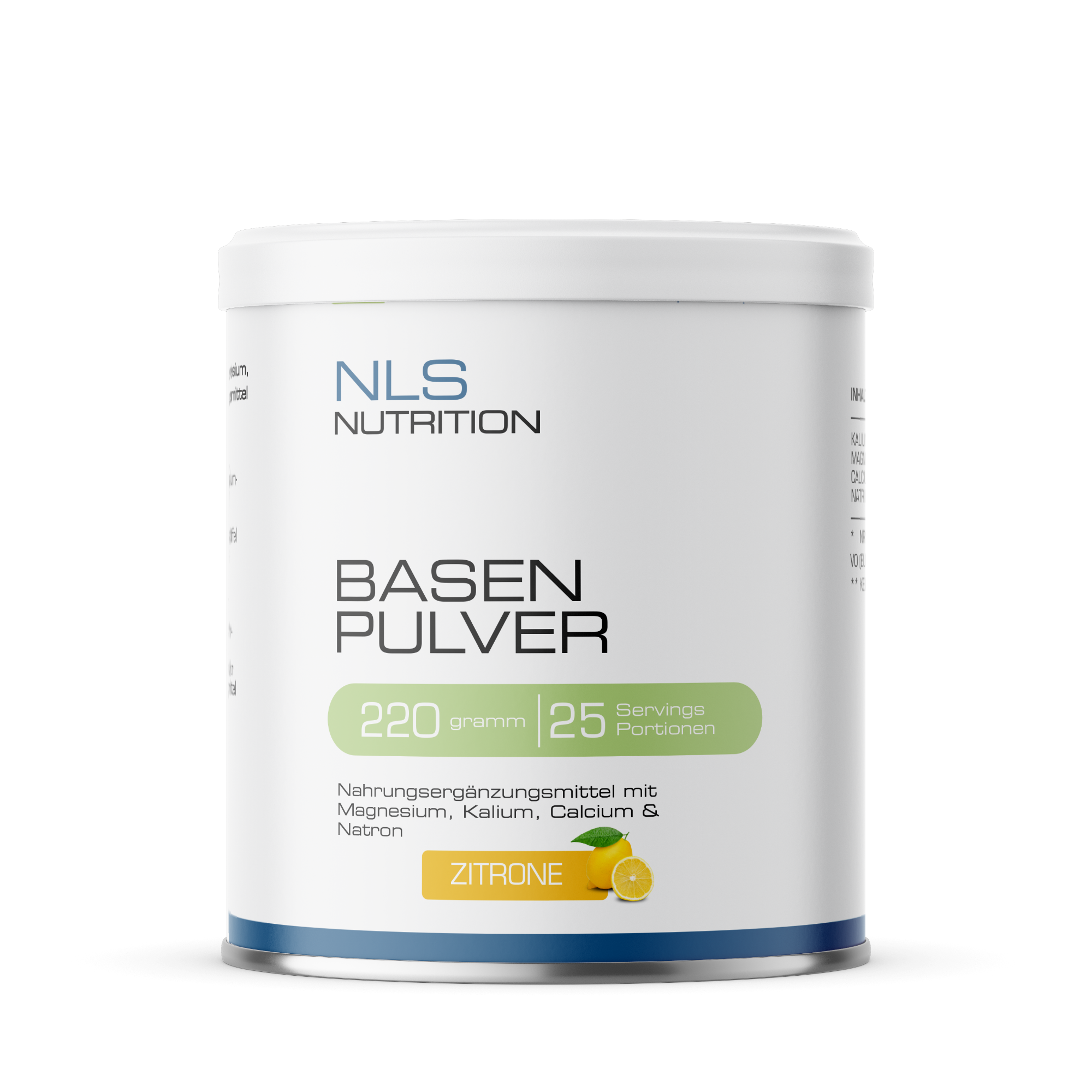
Introduction to the topic: Tumours and the acid-base balance
The acid-base balance is a central topic in health research and is becoming
increasingly important, especially when it comes to the development and growth of
tumours. The human body is dependent on maintaining a stable pH value,
in order to function optimally. A disturbed acid-base balance can lead to various
health problems, including cancer.
What is the acid-base balance?
Acid-base balance refers to the balance between acidic and alkaline
(alkaline) substances in the body. The pH of the blood should ideally be between 7.35
and 7.45, which is slightly alkaline. Various organs and systems work continuously
to regulate this pH value. For example, the lungs help to excrete excess acids through
respiration, while the kidneys balance acids and bases via the urine.
Why is the acid-base balance important?
A balanced acid-base balance is crucial for cell function and
metabolism. Enzymes that are responsible for biochemical reactions in the body require
a certain pH value in order to work effectively. An unbalanced pH can impair
enzyme functions and often leads to an accumulation of toxins in the body.
Tumours in the acid-base balance
Research suggests that tumours thrive better in an acidic environment. A
hyperacidity of the tissue can promote the growth of cancer cells, as they proliferate more quickly in an
acidic environment. In contrast, an alkaline environment appears to inhibit
tumour growth. These findings have led to intensive research
into how the acid-base balance
can be influenced by targeted diet and lifestyle changes in order to reduce the risk of cancer.
This provides the basis for a better understanding of how acid-base balance
and tumour growth are linked. In the following sections, we will
dive deeper into the scientific basis, current research findings and preventive
measures.### Scientific basis of the acid-base balance
To deepen our understanding of the importance of the acid-base balance in connection with
tumours, it is helpful to look at the scientific basis of this system at
.
The pH value and its significance:
The pH value is a measure of the acidity or alkalinity of a solution. A pH value of 7
is considered neutral, values below are acidic and above are alkaline. The human body
works continuously to maintain the pH of the blood between 7.35 and 7.45, which is considered
slightly alkaline. This range is crucial for the optimal functioning of enzymes and
biochemical reactions in the body.
Regulatory mechanisms of the body:
The body has several mechanisms to maintain the acid-base
balance. The most important of these include
- Buffer systems: These consist of weak acids and bases that can absorb or release excess protons (HI ions). Examples are the bicarbonate buffer system in the blood and the phosphate buffer system in the cells.
- Respiratory system: The lungs regulate the pH value by releasing carbon dioxide (CO2), an acidic waste product of metabolism. Increased respiration can lower the CO2 level in the blood and thus increase the pH value.
- Kidney function: The kidneys play a key role by excreting excess acids via the urine and reabsorbing bicarbonate back into the bloodstream.
Influence of external factors:
In addition to the body's own regulatory mechanisms, external factors can also influence the acid
alkaline balance. These include diet, stress and physical activity. A
diet rich in acid-forming foods such as meat and sugar can increase the
acid load in the body, while alkaline-forming foods such as fruit and vegetables can help
to balance the pH value.
These scientific principles are crucial to understanding the complex relationships
between acid-base balance and cancer development, which are discussed in more detail in the next
section.### Relationship between acid-base balance and
cancer development.
The connection between the acid-base balance and the development of cancer is a
highly topical field of research that provides exciting findings. A central thesis is
that a disturbed acid-base balance can promote the growth of tumours.
The role of the acidic environment:
Cancer cells appear to thrive better in an acidic environment. Studies show that
tumour cells are able to lower the pH value of their environment by producing more
lactic acid. This process, known as the Warburg effect, results from the
favoured anaerobic glycolysis of cancer cells, even in the presence of oxygen. A
more acidic environment can increase the invasiveness of tumour cells and promote their ability to
metastasise.
Influence of pH changes:
Low pH can alter the structure and function of proteins and cell membranes
, leading to increased cell proliferation and decreased apoptosis. These
changes favour tumour growth and make it more difficult to control cancer cells
. In addition, acidic conditions can weaken the immune system by
impairing the function of immune cells such as T lymphocytes and natural killer cells
.
Metabolic adaptations:
Cancer cells adapt their metabolism to acidic conditions, which gives them a
survival advantage. Some cancer cells can activate proton pumps and other
mechanisms to remove excess acids from the cell and thus keep the
intracellular environment alkaline.
To summarise:
The acid-base balance plays an important role in the development and
progression of cancer. The ability of tumour cells to generate and utilise an acidic environment is a
critical factor for their growth. This knowledge offers new approaches for therapeutic
strategies aimed at normalising pH to inhibit tumour growth
.
Current research results and studies on the topic
Research into the connection between tumours in the acid-base balance and cancer
is growing rapidly and providing promising findings. A large number of studies are shedding light on
how a disturbed acid-base balance can influence tumour growth and which
mechanisms are behind it.
pH value and tumour growth:
A study from 2020, published in the Journal of Cancer Metabolism, showed that
tumour cells exhibit an increased proliferation rate in an acidic environment. The researchers
observed that cancer cells lower the pH of their
environment by producing lactic acid, which makes them more resistant to conventional therapies.
Therapeutic approaches:
Another exciting area of research is investigating how the pH value can be specifically used
to combat tumours. A study published in the International Journal of Molecular Sciences
in 2019 reports that the use of pH-modulating substances can increase the
effectiveness of chemotherapies. For example, it was shown that
sodium bicarbonate can significantly inhibit tumour growth in animal models by neutralising the
acidic environment.
Genetic factors:
The role of genetics in the acid-base balance and its effects on tumours has also been investigated
. A research paper published in Nature Communications magazine in
2021 found that mutations in certain genes responsible for regulating pH
can increase the risk of certain types of cancer. These findings
offer new targets for personalised cancer treatments.
Diet and lifestyle:
A systematic review study published in the American Journal of Clinical Nutrition in
2022 highlighted that a diet rich in alkaline-forming foods such as fruit and
vegetables can have a positive effect on the body's pH level. The study showed that participants who followed such a diet
had a lower risk of various types of cancer.
To summarise, the current research findings underline the importance
of acid-base balance in the context of cancer development and treatment.
The findings from these studies offer valuable approaches for preventive measures and
new therapeutic strategies.
Preventive measures and dietary recommendations for regulation of the acid-base balance
Preventive measures and a conscious
diet play a decisive role in promoting acid-base balance and reducing the risk of tumours in the
acid-base balance. Here are some recommendations:
Dietary recommendations:
- Consume alkaline-forming foods: A diet rich in fruit, vegetables, nuts and seeds can help to regulate the body's pH levels. For example, leafy vegetables such as spinach and kale and fruits such as bananas and berries are particularly alkaline-forming.
- Reduce acid-forming foods: Foods such as red meat, refined sugar and processed foods tend to increase acidity in the body. The consumption of such foods should be minimised to avoid acidosis.
- Drink enough water: Water helps to flush out toxic substances and regulate the acid alkaline balance. It is recommended to drink at least 2 litres of water a day.
Lifestyle changes:
- Stress management: Chronic stress can have a negative impact on the acid-base balance . Techniques such as meditation, yoga or breathing exercises can help to reduce stress and promote balance in the body.
- Regular physical activity: Exercise helps to regulate the metabolism and stabilise the acid-base balance. It is recommended to incorporate at least 30 minutes of moderate exercise per day.
Supplementary measures:
- Food supplements: In some cases, food supplements such as sodium bicarbonate or alkaline minerals such as calcium and magnesium can help to support the acid-base balance, but this should only be done in consultation with a doctor .
By integrating these preventive measures and dietary recommendations, the
acid-base balance can be positively influenced and the risk of tumours in the acid-base balance
reduced.
Conclusion and future perspectives in cancer research regarding the acid-base balance
The findings on the role of acid-base balance in the development and progression of
tumours have the potential to change cancer research and treatment in the long term. A
disturbed acid-base balance, which leads to tissue acidification, appears to play a
decisive role in promoting tumour growth. This finding offers
new approaches for preventive and therapeutic measures.
Future research directions:
The future of cancer research in relation to acid-base balance could take several
exciting directions:
- Development of pH-based therapies: Targeted modulation of pH in tumour tissue by drugs or diets could be a promising strategy to inhibit the growth and spread of cancer cells. Initial studies show that neutralisation of the acidic environment can significantly reduce tumour growth.
- Personalised medicine: The identification of genetic markers that indicate a disturbed acid-base balance could lead to personalised treatment approaches. Patients with specific genetic predispositions could be treated specifically with pH-modulating therapies.
- Integration into existing therapies: Existing treatment regimes could be optimised through the integration of pH-regulating measures. This could increase the effectiveness of chemotherapies and radiotherapies and at the same time reduce side effects .
- Long-term studies: Long-term studies are needed to investigate the long-term effects of a pH-modulating diet and other preventive measures on cancer incidence and progression.
In summary, research into the link between
acid-base balance and tumours could make an important contribution to the development of new, more effective
cancer treatments. The findings to date are promising and
suggest that targeted regulation of pH could play a central role in
future cancer treatments.
References:
https://www.saeure-basen-ratgeber.de/faq/uebersaeuerung-und-krebs-wissenschaftliche-faktentipps/
https://www.saeure-basen-ratgeber.de/blog/saeure-basen-haushalt-bei-krebspatienten/
https://www.biokrebs.de/information/was-kann-ich-selbst-tun/saeuren-basen-haushalt
https://
www.24vita.de/gesundheit/krebs-ernaehrung-mythen-saeure-base-haushalt-koerper-tumore-wegremers-
heidelberg-90942526.html
https://www.eumunys.com/therapien/immuntherapie/saeurebasen-
therapy
https://www.marcus-reich.com/2019/12/14/die-erkrankung-krebs-und-dersaeure-
base-household/
http://www.mri.tum.de/pressemeldungen/neue-einblicke-dentumorstoffwechsel
https://eurumed.de/wp-content/uploads/2020/02/
Thumorgeschehen_Worlitschek.pdf, https://www.der-privatarzt.de/artikel/eine-erganzung-in-derkrebstherapie-
pao-02-19-onkomed
Become a member now
As a member, you will receive further information and frequencies on this topic! Log in here!


